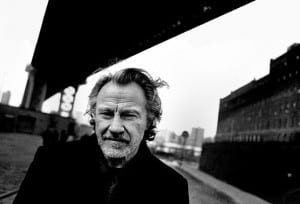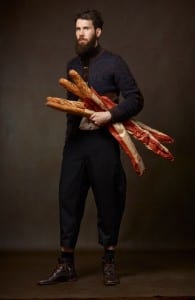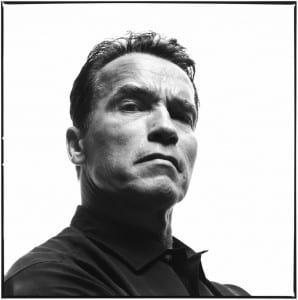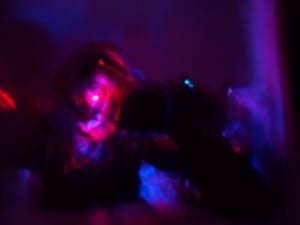Portraiture
In this brief I was tasked with taking three portraits: a selfie, a photograph of a familiar and a photograph of a stranger.
Portraiture:
1. the art or an instance of making portraits
2. a pictorial representation; portrait
2. a verbal picture
www.dictionary.com/browse/portraiture.com
Although we primarily think of ‘selfies’ as being a modern phenomena, portraiture and the art of capturing still of ourselves has actually been around since the beginning of time to show both physical appearance and power. The ancient Egyptians and Greeks had a fascination with portraiture; drawing wall paintings of gods and sculptures of both deities and common people.
The Renaissance saw the re-invention of portraiture in its modern sense and is pivotal movement in the history of the genre.
www. fabulousnoble.com/news/history_of_portraiture
Portraiture evolved from primarily featuring royalty and religious figures to commonly used by everyone across media forms such as promotional features, magazines, newspapers and self- expression on social media and has even branched out into experimentalism.
Anotonin Kratochvil
As a photojournalist, Kratochvil documented human catastrophes and upheaval in his own unique style. His work focuses heavily on themes of poverty and often shoots on film in black and white. His portraits a fairly shallow depth of field and have a high contrast between the two colours, which focuses the eye toward the detail on the subject’s face. The framing of the subjects is tilted and they are also just off centre. This creates a dynamic sense of movement in the portrait as if we are catching the subject in the middle of doing something and their direct eye line being towards the camera amplifies this idea that they are normal people living their lives. What interests me most about these photographs is that the subjects are strangers that Kratochvil works with briefly but manages to capture a intimate and candid piece.

Mike Mellia
A New York born photographer and director, Mike Mellia creates ads for fashion and lifestyle brands but is also known for his project: ‘A Selfie a Day Keeps the Doctor Away. This is a series of self-portraits in which he takes on a number of personas to create humorous and creative images that reference his work in advertising as well as experimenting with a new take on modern society’s love of ‘selfies’. A large number of his portraits are taken in a studio setting with lighting that we would typically expect to see from a studio portrait or advertisement.

Richard Avedon
Avedon started out taking identification photographs for the Merchant Marines and then moved into fashion photography, which led him to become well known for his portraiture work.
Most of his recognisable pieces are shot on black and white film in studio conditions. This meant that he could use bright white backgrounds and high-key lighting to really make the subject stand out by creating large areas of negative space. The lighting also captures the details on the subject while the high exposure masks any imperfections. There is a softness to his work as is both minimalistic and detailed, which is aesthetically pleasing.
Avedon broke the convention for portraiture at the time as subjects usually showed no discernible emotions. Instead, he communicated with his subjects and created a connection with them, which allowed him to capture emotions that can be seen in the photographs. The observer is allowed to see who the person is and what they are feeling through there expressions and demeanour, which gives the work character and life.
His iconic style and interaction with his subjects increased his popularity and allowed him to work with a number of significant political figures.

My work
Self
For this portrait, I wanted to explore a creative way of expressing how I feel using portraiture. I decided that I wanted to play with lights and colours to show how hectic and chaotic my brain is when I get stressed or anxious. I knew that I wanted to incorporate my light projector in some way as the patterns and colours are interesting and it is something that I use to calm down when I feel anxious. I chose to wear dark colours and have little light i the room to make the colours stand out against my face. I used my own Olympus camera for this portrait as i had played around with light drawings before using my camera so I was more comfortable and familiar with the settings that I needed to use. I used a slow shutter speed to create the motion and light blur and used a timer of ten seconds so that I could frame myself properly. I experimented with placing myself in different sections of the frame but eventually chose to position myself to the left of the frame as this allowed me to utilise the negative space to the right of me and use the rule of thirds. It was difficult to get the balance of light right in the photos as in some there was too much ambient light so the colours didn’t look as vibrant as I had wanted and in others the light in the room was so dark that there wasn’t much motion blur and just made the photo look out of focus. I decided to just brighten some of the colours in Lightroom as I liked the effect that i had created and didn’t want to alter it too much.

Familiar
For this portrait, I knew that I wanted the subject to be outside, which was something that I was able to experiment with in one of the portraiture workshops. I had the opportunity to practice taking some portraits using natural light and reflectors. In the photo I took, I was happy with the framing and the effect that the metal wall had as a backdrop in the composition. However, I had limited time in this location so I decided to use these purely as practices because I didn’t want to rush and wanted to experiment further with the composition of the portrait.
In a later workshop, we were experimenting with different lenses and how they impacted compositions. During this workshop, I took the opportunity to take my friend portrait. I knew that I wanted to photograph Lynsey as she is used to being in front of a camera and therefore I would feel more relaxed because I knew that she would be patient and fun to work with. She is a very strong person, which is something that I wanted to capture in the photos that I took. I chose the backdrop a demolished building with a large building behind as I thought that the orange colours worked really nicely with the bright blue sky and also made Lynsey’s green jacket and purple/green hair stand out even more.
At first I really struggled to achieve this shot. I knew that I wanted there to be a shallow depth of field and have the background out of focus but my lack of technical knowledge meant that I was unsure how to do it. My tutor helped me by telling me the settings that would work best and took a few examples before wiping the settings and letting me do it for myself. Although I was a little disheartened at first, working this way helped me to understand the different settings in relation to the effect they had as I could see the changes first hand. It also meant that I was able to come away with a portrait that I was really happy with.
The editing for this photograph was relatively minimal as I didn’t want the colours to look artificial. I upped the contrast slightly and cropped the image so that it was completely level.
Stranger
For me, this brief was the most daunting. The thought of approaching a stranger and asking to take their photo was an uncomfortable and awkward one. I went into town multiple times, camera in hand, hoping to muster the courage but I was too overwhelmed every time. I decided to change my approach as I knew that I come into contact with strangers every day and don’t feel uncomfortable talking to them, some of whom I see almost every day. One morning, I stopped to get a drink from the stall in the university building and got talking with the girl who was working there. I asked her if she would be interested in having her photograph taken and explained what my brief was. She was happy to take part and was eager to try out different things. I wanted to get shots of her working as well and ones where she was posing more towards the camera so I would have a variety of photos to choose from. While I was taking the photographs, we talked about university and I found out that she is currently in her second year of studying English Literature and enjoys her job because she likes talking to new people. I wanted her personality to come across in the pictures so I experimented with lots of different angles and compositions. Overall, the experience was a lot nicer than i thought it was going to be. I actually felt very relaxed when talking to Emma and still managed to get the photographs that I was aiming for.
Reflection
I am pleased with the portraits that I took especially as this brief was the most challenging for me. I struggled with the technical side of things when approaching what I wanted my photos to look like but I don’t think this is overly apparent in my final work. I think that the colours I have chosen in each composition complement each other and you can get a sense of who the people are from how they are positioned. Now that I have developed my skills, I think that I would try to be a little bit more creative with the angles and lines in the photographs as they are all relatively similar. I would also try to have more confidence in my skills and be more willing to make mistakes as I struggled to not be frustrated when I was unsure of how to do something.
Leave a comment